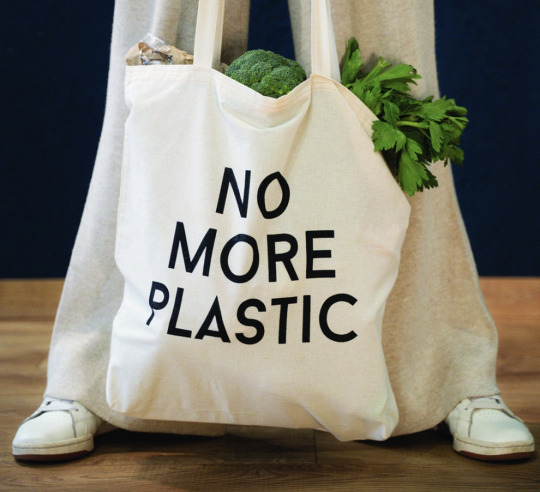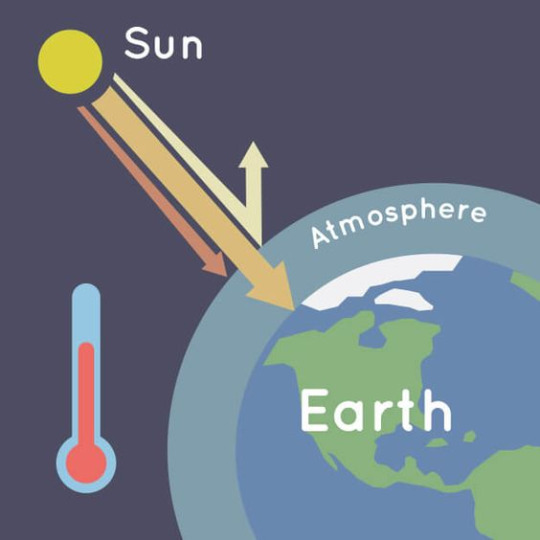#energy conservation
Text
Shout out to my Occupational Therapist for:
Trading fun/weird facts with me.
Helping me out with using my metalsmithing skills to make myself ring splints and for being willing to combine the brace making stuff she has with the metal pieces I'm making to create what will hopefully be the perfect brace for me to wear while I crochet.
Never batting an eye at my weird goals or hobbies.
Listening to me!
I called my right arm my hammer arm today, and she not only accepted that statement but knew what I meant.
Already alerting the physical therapist I'll be seeing in late October to the fact that they need to work together to figure out getting me a wheelchair that fits better and that has a good back and cushion.
Trying to get insurance to start covering my compression wear so I can get properly fitted good quality gloves & sleeves.
Going down rabbit holes with me but also getting me back on topic eventually.
Making OT fun.
For not judging me for talking to someone else with EDS in the waiting room for like 20 minutes after my appointment.
Not being mad that sometimes IBS and/or ADHD make me late and for being understanding about the 2 last minute cancelations I had after I was covid negative but still struggling too much with fatigue to drive safely.
Giving me movie recommendations.
Lastly, for being great at her job and helping me meet objectives we set.
She's great even though penguin x-rays now haunt my dreams.
#ehlers danlos syndrome#adhd#asd#eds zebra#potsawareness#dysautonomia#pots#chronic illness#chronic fatigue#chronic pain#spoonie#endometriosis#craniocervical instability#scoliosis#wheelchair#accessibility#disability#occupational therapy#OT#energy conservation#strengthening#penguins#babe with a mobility aid
100 notes
·
View notes
Text
10 Easy Ways to Start Your Sustainable Journey Today
Introduction:
Embarking on a sustainable journey doesn't require a complete overhaul of your lifestyle. In fact, small, mindful steps can lead to significant positive changes for both you and the environment. If you're new to sustainability or looking for simple ways to make a difference, you're in the right place. In this post, we'll explore ten easy steps you can take right now to kickstart your sustainable living journey.

1. Reduce, Reuse, Recycle:
The classic mantra holds true. Start by properly recycling items like paper, glass, and plastics. Before tossing something out, consider if it can be repurposed or upcycled. Reducing waste begins with conscious choices.
2. Conserve Energy:
Switch off lights and unplug devices when not in use. Opt for energy-efficient LED bulbs and appliances. Even adjusting your thermostat by a degree or two can make a difference.
3. Ditch Single-Use Plastics:
Invest in reusable shopping bags, water bottles, and coffee cups. Say goodbye to disposable utensils and straws. These small changes can significantly reduce plastic waste.
4. Choose Sustainable Transportation:
Whenever possible, opt for walking, biking, or using public transportation. Consider carpooling or investing in an electric or hybrid vehicle if it aligns with your needs.
5. Support Local and Sustainable Food:
Frequent local farmers' markets, and choose seasonal, locally sourced produce. Reducing food miles and supporting sustainable farming practices benefit both you and the planet.
6. Unplug and Disconnect:
Set aside tech-free time to reduce screen time and energy consumption. Encourage family or friends to join you in reconnecting with nature and each other.
7. Practice Mindful Consumption:
Before making a purchase, ask yourself if it's a necessity. Invest in high-quality, durable items that will last. Choose brands with a commitment to sustainability.
8. Compost Your Kitchen Waste:
Turn food scraps and yard waste into nutrient-rich compost for your garden. It's a fantastic way to reduce landfill waste and enrich your soil naturally.
9. Educate Yourself and Others:
Stay informed about environmental issues and solutions. Share your knowledge with friends and family to inspire collective action.
10. Get Involved Locally:
Engage with local environmental groups and community initiatives. Participate in clean-up events, tree planting, or sustainability workshops. Your active involvement can create positive change at the grassroots level.
Conclusion:
Remember, sustainability is a journey, not a destination. Each step you take, no matter how small, contributes to a brighter, greener future. So, start today, and together, we can make a meaningful impact. Stay tuned for more insights and tips on sustainable living from GreenLife Insights!
#sustainability#greenliving#eco friendly#Environmental Conservation#reduce#reuseandrecycle#energy conservation#mindful consumption
30 notes
·
View notes
Text

International Polar Bear Day 2024 國際北極熊日
HEY HUMAN, SEE WHAT YOU DO!?
ANIMAN - FLOATING POLAR 浮冰熊
Instagram: milkdongcomics
Facebook: Milk DoNg Comics
#國際北極熊日#International Polar Bear Day#北極熊#Polar Bear#節約能源#Energy Conservation#全球暖化#Global Warming#溫室效應#Greenhouse Effect#ANIMAN#HEY HUMAN SEE WHAT YOU DO!?#Milk DoNg#Milk DoNg Comics#Art#Drawing#Sketching#Painting#Illustration#Character Design#Color Pencil
4 notes
·
View notes
Text
Just moved into a house that has an electric hot water heater and after monitoring the electric usage for a few days it became apparent that the hot water heater was driving the overwhelming majority of the usage of electricity. Our electric bill was on target to be around $130/month from usage alone (more for the customer charge), but after a few innovations we reduced our daily usage to where it's now set to average closer to $90/month for usage.
The temperature on the hot water heater was already turned down to the safest setting (120°F); you don't want to go any lower than this because harmful bacteria can start growing in the tank. In one previous apartment I lived in, the temperature was set higher, and we were able to lower it which saved about $15 a month.
Some of the innovations we made this time around include:
In the kitchen where there is a single faucet that you can turn to the left for hot and right for cold, we had been leaving the faucet in the middle most of the time, which was using a blend of hot water. We often wouldn't notice the waste because we'd just use the tap for a short burst of water, so the water wouldn't run long enough to get hot. But it was still wasting hot water, drawing it out of the tank to where new water needed to be heated. To address this, we started turning the handle the whole way to the right and we only ever turn it to the left when we specifically need hot water; otherwise we keep it the full way to the right.
I started using cold water for some usages where hot water wasn't strictly necessary.
I started taking cooler showers, going as cold as was comfortable for me, which in the summer heat was pretty easy.
In the long-run we've considered other innovations, such as adding more insulation along the hot water pipes coming out of the boiler, and also looking into potentially replacing it, such as with a heat-pump hot water heater or a solar one, both of which can yield huge savings.
We also considered getting a new showerhead with a detachable head and a setting that only runs water when you hold down a button. For example you can lather up with soap or shampoo and then only run the water to wash it off. This hugely reduces all water usage, including hot water if the settings are on hot. The cost of hot water with an electric hot water heater is much higher than the cost of water itself, so the savings on hot water alone by doing this can be huge. I'm not sure how much this stuff is going to save but I'm optimistic given that we seem to have already reduced our usage enough to save about $40 a month.
Even if you live at home with parents, or in an apartment where hot water is included in your rent, someone is paying for hot water. In the long-run, rent tends to go up as expenses go up so a lot of these expenses get passed on to tenants anyway, so you aren't necessarily just making your landlord richer by conserving: it can actually help to keep rents down for all tenants if you conserve hot water. You can also talk to your landlord about innovations like turning down the temperature of the water (which has other benefits like reducing scalding risk, which a landlord might care about because it could be a potential point of liability if someone is burned by water that was too hot) until it is around 120°F. In most apartments you can also just buy and install your own showerhead, most can be installed just by screwing off the old one, then if you want to take it with you you can just put the old one back on when you move out, or you can leave it for the next tenant to enjoy.
7 notes
·
View notes
Text
On Thursday, the newly reopened House passed H.R. 4394, Energy and Water Appropriations. The bill will go through major changes on arrival in the Senate as it attempted to gut all of the environmental regulations and spending put into effect by the Biden Administration.
#H.R. 4394#Energy and Water#Appropriations#energy conservation#energy exploration#water treatment#climate change#u.s. house of representatives#house of representatives#roll call#FY2024#to the Senate#21 days left#government shutdown?#right wing wet dream
3 notes
·
View notes
Text
Something I don’t think a lot of leftists/environmentalists consider when discussing energy and climate and clean energy and all that is how we need to change consumption and upgrade production of energy. Because yes, wind and solar are better than oil and more sustainable. But there’s big drawbacks.
Wind and solar in their current state take up tons of land and other resources. This disrupts the natural environments and can sometimes be destructive to indigenous land in a manner not unlike oil production. And we don’t know how well we can maintain enough energy production in these manners without destroying the environment in ways other than global warming. We need better methods of getting clean energy. For example, solar glass on any homes with windows so materials and land used aren’t as high.
But still, that doesn’t solve things.
Electricity is a good thing. It allows us to stay more connected to the rest of the world, it powers important medical equipment and production equipment, etc. but we need to use it less. Make homes that manage heating and cooling more naturally, so you don’t need electricity for that. If the building isn’t equipped with that, employ the many electricity-free options for heating and cooling. Avoid using electric lights if you’re able. Use natural lighting from windows and allow your body to follow the natural circadian rhythms we had before electric lights changed it all. If you do need light, try non electric lighting, like candles!
Sustainable energy production is important, but how we consume it is too. We can’t live in harmony with the earth if we’re just trying to find ways to use its resources. We need to secede back to the environment, do things for it’s good above ours sometimes, because in the long run that’s the best for everyone.
#solarpunk#clean energy#solar#windenergy#energy#electricity#sustainability#ecofriendly#energy consumption#energy conservation#leftist#leftism#communism#socialism#anarchism#environmetalists
16 notes
·
View notes
Text
youtube
Multilayer Ceramic Capacitors (High Dielectric Type) with TAIYO YUDEN
https://www.futureelectronics.com/resources/featured-products/taiyo-yuden-multilayer-ceramic-capacitors-high-dielectric-type. TAIYO YUDEN offers a broad lineup of small size, low profile, high capacitance value, and high reliability products from the initial materials used to development and production to meet customer needs. https://youtu.be/trl1uBZkWK4
#Multilayer Ceramic Capacitors#TAIYO YUDEN#energy conservation#Internet of Things#capacitors#TAIYO YUDEN multilayer ceramic capacitors#TAIYO YUDEN High Dielectric#TAIYO YUDEN capacitors#Youtube
2 notes
·
View notes
Text
POWER AUDIT
A power audit will help in identifying low cost to save energy, as well as cost effective capital improvements in your electricity bills. power audit is for the analysis of energy flows and detection of energy losses for energy conservation.it is the study of a building, plant or industry to determine where energy is being wasted and where we can save energy.
energy conservation is the main objective of a power audit and this is what any company needs to reduce running cost. a power audit can provide valuable information about the most cost-effective ways to reduce your business's energy consumption.
2 notes
·
View notes
Text
Beyond Buzzwords: Embedding Sustainability into Company Culture with Microlearning

"Sustainability," "Going green" – If buzzwords could capture carbon, global warming would have been solved already. The reality, however, is that achieving sustainability requires more than just trendy phrases; it demands a deep understanding, the will to act, and a commitment to accountability. Many companies are striving to be sustainable, but to truly integrate sustainability into a company’s culture, we must look beyond the buzzwords and explore the real meaning of sustainability and how microlearning can play a crucial role in this transformation.
Understanding Sustainability
Sustainability is often described as meeting the needs of the present without compromising the ability of future generations to meet their own needs. It encompasses three main pillars: environmental protection, social equity, and economic viability. These pillars are interconnected, and true sustainability can only be achieved when all three are balanced.
Environmental Protection: This involves managing resources to prevent degradation, preserving biodiversity, and reducing pollution and waste.
Social Equity: Ensuring fair treatment, opportunities, and access to resources for all people, fostering a community where everyone can thrive.
Economic Viability: Creating systems that support long-term economic growth without negatively impacting social, environmental, and cultural aspects of the community.
Moving Beyond Buzzwords
While many companies claim to support sustainability, the challenge lies in translating these claims into concrete actions and measurable outcomes. This requires:
Understanding: Employees at all levels need a clear understanding of what sustainability means in the context of their work and the broader goals of the organization.
Will to Act: Organizational leaders must demonstrate a commitment to sustainability through policies, practices, and resource allocation.
Accountability: There must be systems in place to track progress, measure outcomes, and hold individuals and teams accountable for their contributions to sustainability goals.
The Role of Microlearning in Promoting Sustainability
Microlearning, an educational strategy that delivers content in small, focused bursts, can be a powerful tool to embed sustainability into a company’s culture. Here’s how:
Targeted Content: Microlearning allows for the creation of specific, actionable content that addresses the unique sustainability challenges and goals of a company. For example, a manufacturing company might develop microlearning modules on waste reduction techniques, while a tech company could focus on energy-efficient practices.
Engagement and Retention: Short, engaging modules are more likely to capture employees’ attention and improve retention compared to traditional, longer training sessions. This is crucial for sustainability training, which often involves complex, multi-faceted information.
Flexibility and Accessibility: Microlearning can be delivered through various platforms (e.g., mobile apps, intranet sites), allowing employees to access training at their convenience. This flexibility ensures that sustainability education fits seamlessly into employees' workdays.
Continuous Learning: Sustainability is an ongoing commitment, not a one-time effort. Microlearning supports continuous education by regularly updating content and reinforcing key concepts, keeping sustainability top of mind for employees.
Measurable Outcomes: Microlearning platforms often come with built-in analytics tools, enabling organizations to track progress and measure the impact of their sustainability training programs.
Implementing Microlearning for Sustainability
To effectively use microlearning to promote sustainability, organizations can follow these steps:
Identify Key Areas: Determine the specific sustainability areas that are most relevant to your organization. This could include energy use, waste management, water conservation, ethical sourcing, and more.
Develop Engaging Content: Create microlearning modules that are interactive and engaging. Use a variety of formats, such as videos, quizzes, infographics, and case studies, to cater to different learning styles.
Integrate into Daily Operations: Make sustainability training a part of everyday operations. Encourage employees to complete microlearning modules during their breaks or integrate them into regular team meetings.
Leverage Technology: Use microlearning platforms that allow for easy access and tracking. Ensure that the content is mobile-friendly, so employees can learn on-the-go.
Monitor and Adapt: Regularly review the effectiveness of your microlearning programs. Use analytics to identify areas for improvement and update content as needed to address emerging sustainability issues and goals.
Case Study: A Sustainable Microlearning Success Story
Consider a global retail company aiming to reduce its carbon footprint and promote sustainable practices across its operations. The company implemented a microlearning strategy to educate its workforce on sustainability.
Customized Modules: The company developed tailored microlearning modules focusing on different aspects of sustainability, such as energy conservation, waste reduction, and sustainable sourcing.
Engagement through Gamification: To increase engagement, the company incorporated gamification elements into the modules, such as leaderboards, badges, and rewards for completing training.
Accessibility: The modules were made accessible through a mobile app, allowing employees to complete training at their convenience.
Continuous Updates: The company committed to continuously updating the content to reflect the latest sustainability trends and best practices.
Measuring Impact: Using the analytics tools provided by the microlearning platform, the company tracked completion rates, knowledge retention, and changes in employee behavior.
As a result, the company saw a significant increase in employee engagement with sustainability initiatives. Energy consumption was reduced, waste management practices improved, and there was a noticeable shift in the company culture towards greater environmental responsibility.
Conclusion
The journey to sustainability goes beyond merely adopting buzzwords; it involves concrete actions and a commitment to continuous improvement. Microlearning offers a practical and effective approach to embedding sustainability into a company’s culture. By delivering targeted, engaging, and accessible content, microlearning can help organizations educate their workforce on sustainability and drive meaningful change.
As companies strive to become more sustainable, leveraging the power of microlearning can ensure that sustainability principles are not just understood but actively practiced across the organization. This, in turn, leads to a more engaged workforce, improved environmental performance, and a stronger, more resilient business. By moving beyond buzzwords and embracing actionable learning strategies, organizations can truly make a difference in the fight against global warming and contribute to a more sustainable future.
#Sustainability#Going green#Global warming#Environmental protection#Social equity#Economic viability#Corporate sustainability#Microlearning#E-learning#Sustainable practices#Organizational culture#Employee engagement#Continuous learning#Customized training#Flexibility#Accessibility#Knowledge retention#Targeted content#Engagement#Accountability#Sustainability training#Sustainability goals#Waste reduction#Energy conservation#Ethical sourcing#Sustainable sourcing#Gamification#Learning analytics#Mobile learning#Training modules
0 notes
Text
Green Building Regulations for Energy Efficiency
The Green Building Regulations for Energy Efficiency in Qatar is a comprehensive guide that outlines the requirements and standards for constructing environmentally friendly and energy-efficient buildings in the country. he regulations also provide guidelines for the implementation of renewable energy sources, such as solar panels and wind turbines, to further reduce the reliance on non-renewable energy sources.
#Green Building Regulations#Energy Efficiency#Qatar Green Building#Sustainable Construction#Green Building Standards#Energy Efficient Design#Qatar Sustain ability#Green Building Code#Energy Conservation#Qatar Construction#Green Building Certification#Energy Efficient Buildings#Qatar Environment#Green Building Materials#Energy Efficient Technology#Qatar Green Initiatives#Green Building Compliance#Energy Efficient Practices#Qatar Sustainable Development#Green Building Policy#Energy Efficiency Measures
0 notes
Text
Revolutionizing Home Convenience: Samsung Unveils AI-Enhanced Family Hub Refrigerator in Australia
Samsung Electronics Co., Ltd. has recently unveiled its highly anticipated AI Family Hub French Door Refrigerator, now available across Australia. This advanced appliance represents a significant leap forward in the integration of artificial intelligence within home devices, offering unprecedented connectivity and smart capabilities. Launched just two days ago, the AI Family Hub is designed to…

View On WordPress
#21.5-inch screen#advanced cooling#AI Cleaning Mode#AI Family Hub#AI Floor Detect#AI Pro Cooking#AI technology#AI Vision Inside#AI Wash#artificial intelligence#BESPOKE AI#connectivity#Consumer Electronics#digital inverter#Eco-Friendly#energy conservation#energy efficiency#entertainment hub#family hub#food inventory#food management#food waste reduction#French Door Refrigerator#future tech#home automation#home management#household appliances#innovative technology#intelligent refrigerator#IoT
0 notes
Text
L'empreinte carbone
What is a Carbon Footprint?
In simple terms, your carbon footprint is the amount of carbon dioxide released into the Earth's atmosphere as a result of human activities, rather than any natural emissions. We produce carbon dioxide through a lot of different actions, such as using electricity, transport, clothes, food, and even throwing out trash! All of this carbon is having a negative effect on the atmosphere, contributing to Global Warming.

We can think of our carbon footprint like any other kind of footprint - it is the trail of carbon dioxide we leave behind us during our daily lives. All of your actions and possessions add up to create your individual carbon footprint. If we actively try to lower our carbon footprint, we can have a positive impact on carbon emissions by cutting the amount of CO2 we produce.

Carbon Footprints can be thought of in a number of different ways. We often talk about carbon footprints of one individual, but you can also think about the carbon footprint of a business, state, or country as a whole.
What makes up your Carbon Footprint?
Any action, item, or process that involves any fuel to be burned will produce some carbon that is added to the atmosphere. This could be anything from taking a long-haul flight to eating a cheeseburger and some fries.
Most things require some amount of carbon to be produced, but the amount of carbon created varies between each item and action. Here are a few of the most common contributors:
Transport:
There are many different types of transport, and some produce more carbon than others. Fossil fuels burned for transportation creates the largest contribution of greenhouse gases to the U.S.'s carbon footprint.
One of the worst offenders for carbon emissions are airplanes, with each passenger contributing around 250 g of CO2 per kilometer. In fact, one return flight from New York to London produces 986kg of CO2 per passenger, more than the average person would use in a year from 56 countries around the globe, including Burundi and Paraguay!

Flights are closely followed by cars and other private transport modes, this is because the carbon emissions are shared between a very small group of people. On average, 404 g of CO2is produced per mile traveled in a light-duty vehicle, and with around 253 million light vehicles operating in the US, that's a lot of carbon dioxide!
However, some modes of transport do offer a less carbon-heavy way of traveling. Taking buses, trains, and trams typically have less of an impact as they are shared by lots of passengers. Car shares are also a good option as they move multiple people to the same place and divide up the emissions between them.
But the best mode of transport by far is to walk or cycle. These modes of transport contribute almost no carbon at all to the atmosphere, plus they can keep us fit and healthy too!

Electricity and Heat:
The second largest contributor to the U.S. carbon footprint is the production of electricity and heat from fossil fuels. This process fuels much of the things we use in our daily lives. From ovens to refrigerators, mobile phones to laptops, and lamps to speakers, all kinds of household items use electricity whenever we use them.

As well as the various gadgets and goods we use, we also use fossil fuels to heat and cool our homes. Whether you use electricity, gas, oil, coal, or even wood, the process of heating your home will normally produce a large amount of carbon emissions.
However, this is slowly changing as renewable and clean sources of energy are becoming more common. These energy sources produce no carbon dioxide once they are set up, and can sometimes be cheaper to use too!
Food:
Food production and transportation contributes to around one quarter of the world's carbon emissions. While transportation of our food does contribute carbon emissions, it is often the farming processes and land required to produce our food that has the largest impact.

Some of the foods with the largest carbon emissions are items such as meat and dairy, as the animals used to produce them use up a lot of food, care, water, and land. Other foods that have bad carbon records include things like coffee and chocolate, often because land is being cleared to produce them, which causes more carbon to enter the atmosphere.
Why are carbon emissions bad for the environment?
Carbon dioxide is just one of a number of greenhouse gases that can be found in our atmosphere, alongside things like methane, water vapor, nitrous oxide, and ozone. CO2 occurs naturally in the environment, but it is also produced in huge quantities as a result of human activities.

The greenhouse gases that collect in the atmosphere trap heat that has radiated from the Earth. Normally, greenhouse gases would keep the Earth at a steady temperature, but this is changing. As more and more carbon dioxide collects in the atmosphere, more and more heat is trapped too. This contributes to rising temperatures on Earth and the damaging effects of climate change.
Climate change is a huge concern for the planet, and many see it as the greatest threat to humanity in the 21st century. This process causes long-term changes to our planet's environment, such as rising average temperatures and changes in precipitation levels. As the Earth warms, other changes will take place, such as:
Rising sea levels and flooding.
Disappearing glaciers in mountain areas.
Ice melting in areas such as Antarctica and the Arctic.
Changes in plant growth patterns and animal hibernation.
How can you reduce your Carbon Footprint?
Next time you're heading out to somewhere nearby, why not walk or cycle instead of taking the car? Or if you're traveling a little further from home, try the bus or train to cut down the carbon.

Recycle as much of your trash as possible instead of sending it to landfill and try to make compost from your food waste instead of sending it to landfill.

Use your heating and air conditioning as little as possible by wearing clothes that are suited to the current temperature instead of relying on energy to change the temperature.

Plant up your yard with herbs, fruits, vegetables, and flowers - these can help you grow your own food and help remove carbon from the atmosphere through photosynthesis!

Bring your own bag to the grocery store so that you don't have to get new ones and try to avoid items that use lots of packaging, especially ones with lots of plastic.

Aim to cut down your meat consumption to a few meals a week, while this can be a tricky one, it can make a real difference to how much carbon dioxide your food is responsible for.

Make sure to turn electronics fully off when you're not using them as they can still use precious energy when they're on standby, causing more fossil fuels to be burned. Try to use as little energy as possible and don't leave any lights or switches on for too long.
Source
Twinkl Teaching Wiki. "Carbon Footprint - Twinkl Teaching Wiki." Accessed May 6, 2024. https://www.twinkl.com/teaching-wiki/carbon-footprint#:~:text=In%20simple%20terms%2C%20your%20carbon,and%20even%20throwing%20out%20trash!.
#Carbon Footprint Reduction#Sustainable Living#Eco-friendly Tips#Climate Action#Sustainable Transportation#Waste Management#Energy Conservation#Urban Gardening#Plastic Reduction#Meatless Meals#Electronic Energy Savings#Green Living#Environmental Responsibility#Low-Carbon Lifestyle#Eco-conscious Choices#Taylor Swift#The Eras Tour#The Green Era#Evansville#Indiana
0 notes
Text
Appreciating SaskPower's Sponsorship
Appreciating SaskPower’s Green Vision: Empowering Conservation Through Education
In the heart of Saskatoon, amidst the urban bustle, lies a thriving ecosystem waiting to be discovered. Thanks to the generous support of SaskPower, the City Nature Challenge Saskatoon 2024 (CNC YXE 2024) has blossomed, inviting residents to connect with nature and foster a culture of conservation. As we look…

View On WordPress
#Appreciation#awareness#Biodiversity Conservation#CARBON EMISSIONS#Carbon Neutrality#City Nature Challenge#Clean Energy#Climate Action#Climate Resilience#climate solutions#commitment#Community Impact#conservation#conservation awareness#Conservation Efforts#culture#dedication#earth-friendly#eco-conscious#eco-friendly initiatives#Eco-friendly Practices#Ecosystem#education#Educational Programs#Efficiency#Empowering#Energy Conservation#environmental advocacy#environmental conservation#environmental impact
0 notes
Text


World Environment Day 2024 世界環境日
CLIFFJUMPING WALRUS in HEY HUMAN, SEE WHAT YOU DO!?
See More: https://a.co/d/hkZwRSh
Instagram: milkdongcomics
Facebook: Milk DoNg Comics
#World Environment Day#世界環境日#Walrus#海象#Jump off Cliff#跳崖#Energy Conservation#節約能源#Global Warming#全球暖化#Greenhouse Effect#溫室效應#ANIMAN#HEY HUMAN SEE WHAT YOU DO!?#Milk DoNg#Milk DoNg Comics#Art#Drawing#Sketching#Painting#Illustration#Character Design#Color Pencil
0 notes
Text

In case you missed it, our latest blog post makes the case for electric heating over gas. We have summarised the key points in a handy chart for you.
Read the full blog post on our website
0 notes
Text
Collision Experimental Apparatus
Collision Experimental Apparatus is used to learn energy conservation and momentum conservation laws by studying the collision of two balls. Collisions between objects is a common phenomenon in nature.Meanwhile, the simple pendulum motion and flat parabolic motion are both basic motion in Kinematics.Collision Experimental Apparatus also can study the simple pendulum motion before collision and flat parabolic motion after collision.On the basis of,the energy loss of the collision between theoretical calculated and experiment obtained is different. Consequently, Collision Experimental Apparatus deep laws of Mechanics,analyze and solve mechanical problems such as shooting.
#COLLISION#ENERGY CONSERVATION#MECHANICS#MOMENTUM CONSERVATION#SHOOTING#SIMPLE PENDULUM#teaching apparatus#educational equipments#technical training equipments and lab supplies
0 notes